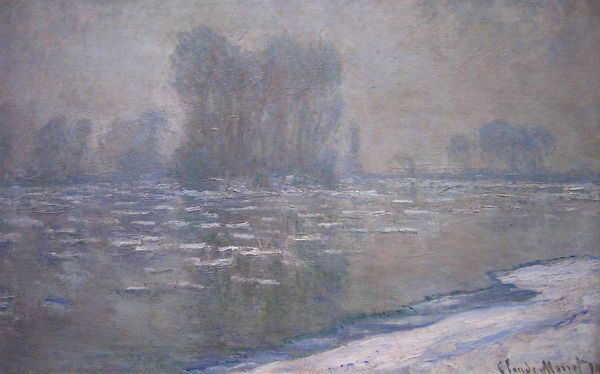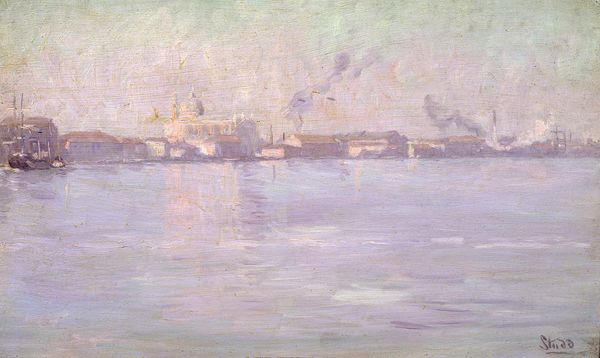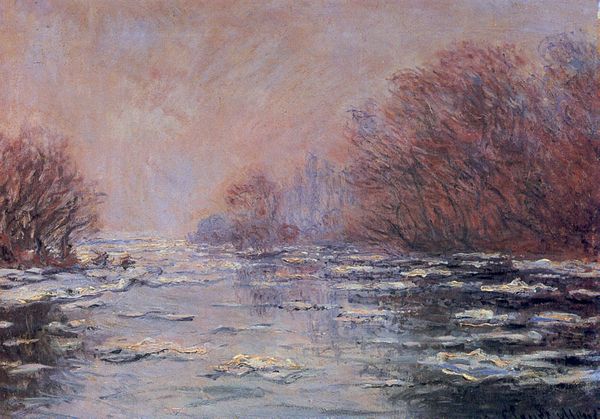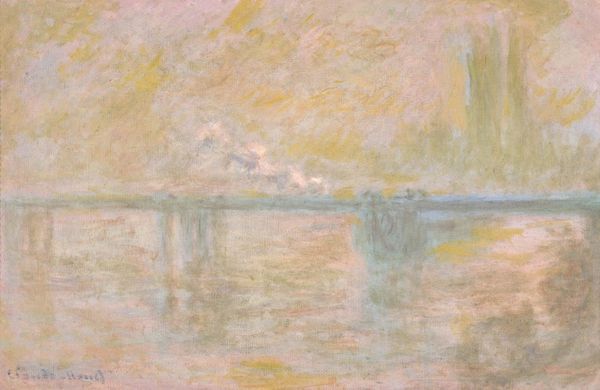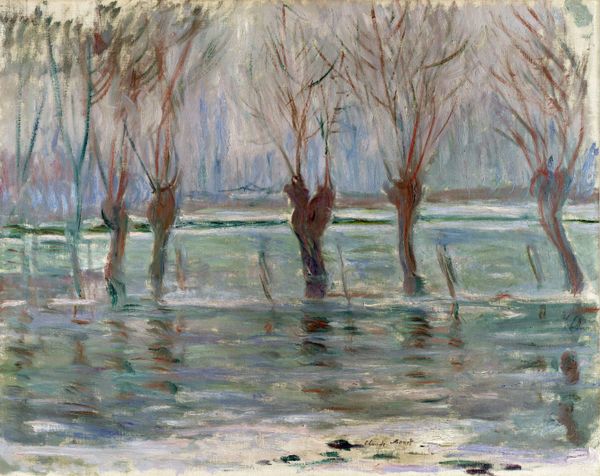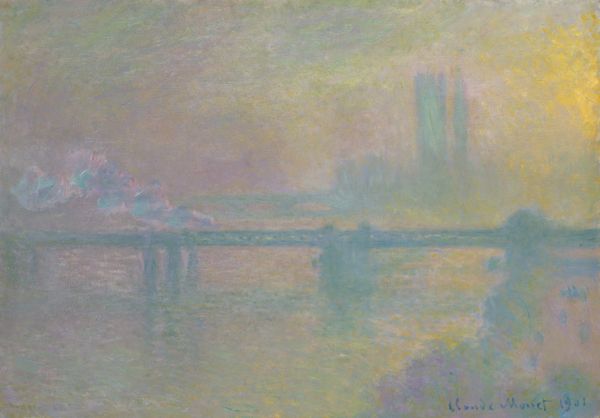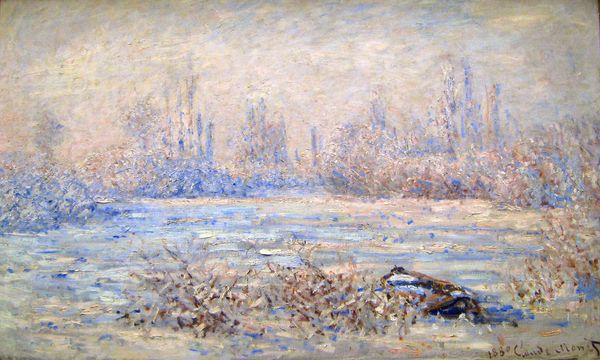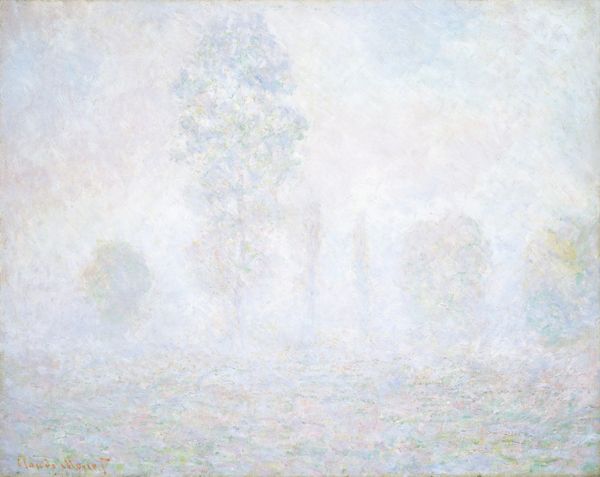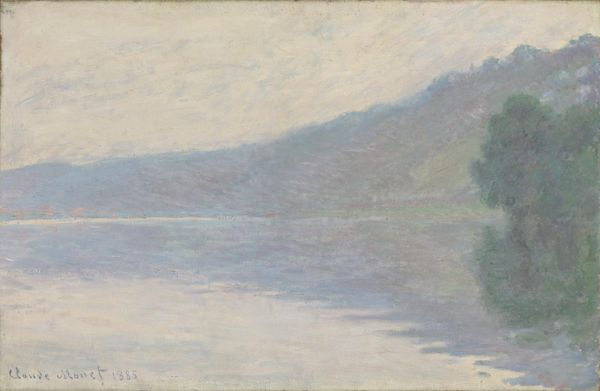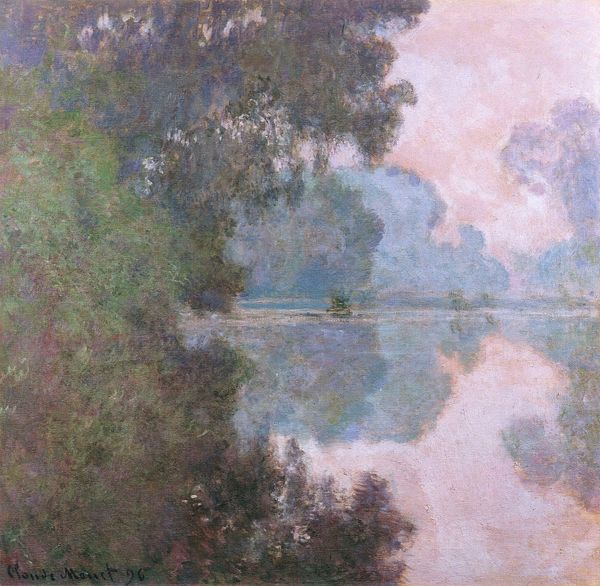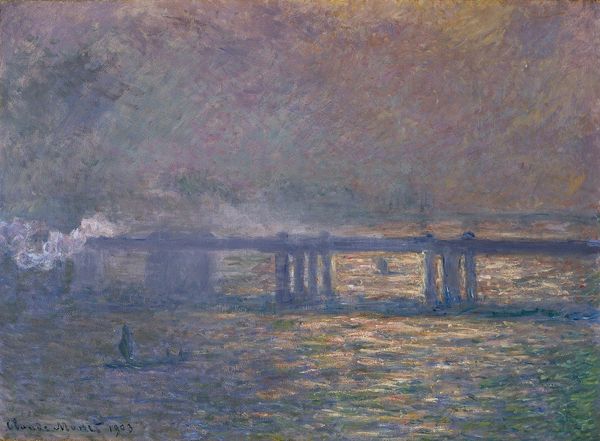
Copyright: Public domain
Curator: Well, Editor, let's turn our attention to Claude Monet’s “Ice on the Seine at Bennecourt,” painted in 1893. It's an oil on canvas, rendering a very particular scene. Editor: Oh, Monet, you ghostly wizard. This image...it’s a melancholic haiku. A wash of grey and the faintest lilac, like a memory fading into winter. Does it make anyone else cold just looking at it? Curator: It certainly evokes the chill, doesn't it? That almost monochromatic palette contributes, really leaning into symbolic associations of winter and endings. We see how ice becomes a symbol of something coming to a halt. But look closer; it's not simply grey. There are these incredibly subtle blues and pinks layered to create depth and texture. Monet painted it *en plein air*, capturing an instantaneous and emotional reading of the scene, making winter sublime. Editor: Sublime is a good word for it. There is something both stark and serene, with these little pops of warmth suggesting resilience... Or maybe it is just the colors reflecting on the ice. Look at the reflection of the trees, as ghostly versions of themselves in the water. That play of light and shadow makes me think of mirrored selves—it’s all very psychological. Like looking into our own depths. Curator: Exactly. Notice how the reflections also disrupt the solidity of the scene. We expect to see water, but instead, we find the sky and land merging, challenging our perception of space. That dissolving boundary becomes, I think, a metaphor for change and transition. It asks what will happen once the ice has melted. What realities might then be revealed. Editor: Huh. You’re right. The scene feels unstable, on the cusp of something new, while being weighed down by the cold stasis. I wonder what it was like for Monet. Did this scene mirror some sort of change or experience he was going through at the time? Curator: It is possible to only speculate. He'd moved to Giverny a decade prior, which provided him with countless landscapes like this along the Seine, perhaps his exploration of similar visual themes points towards the opposite; using familiarity as a sort of personal stability? The symbols in that sense, become his way of processing it. Editor: Well, that does make you think about symbols within life; are we shaping their context, or is it the other way around? Fascinating and rather lovely—the thought that you could freeze an experience like that and just hold it still for the world. Curator: Yes. Thank you for that rather artistic conclusion. It has been a refreshing analysis of something on the surface appearing so uniform.
Comments
No comments
Be the first to comment and join the conversation on the ultimate creative platform.
